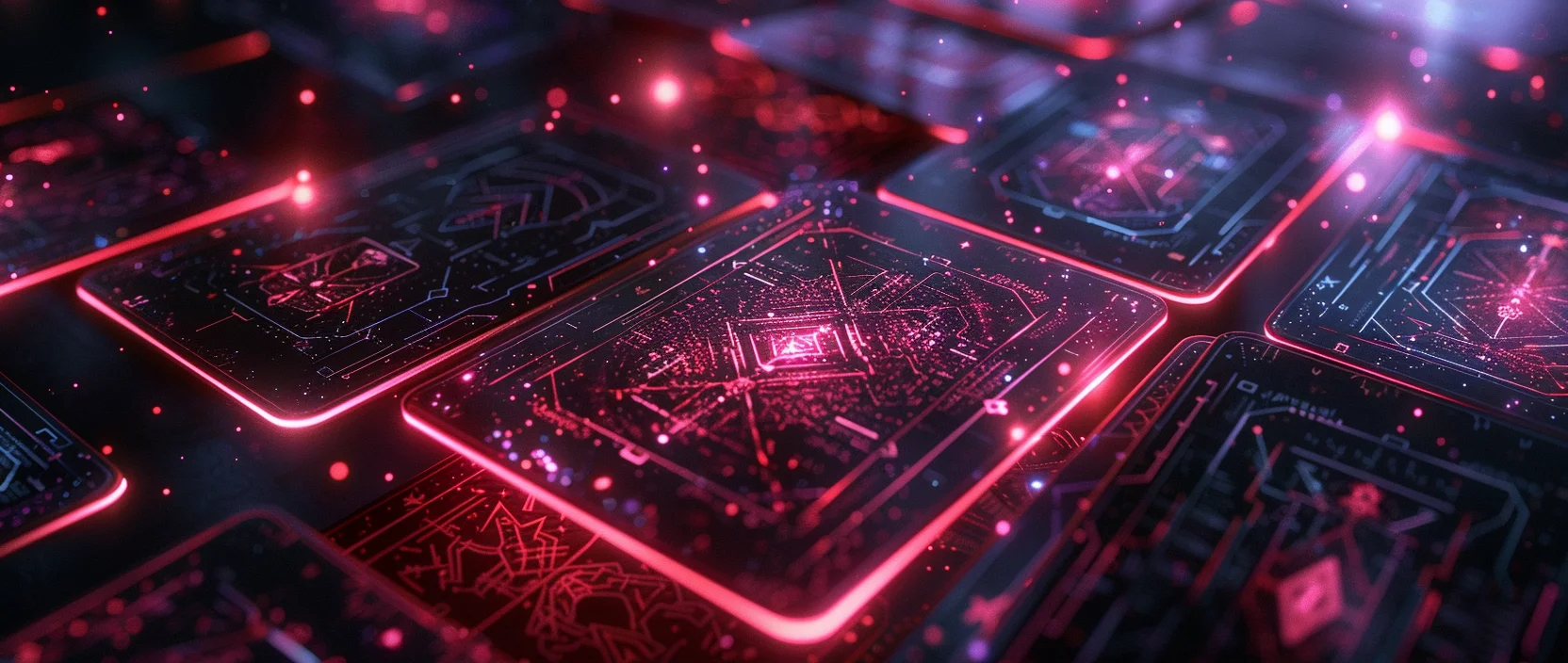In today’s digital entertainment landscape, where the boundaries between games and financial tools are blurring, the PiCO project offers a unique fusion of card-based strategy and decentralized economy. Built on the Flare Network, this game gives players full control over their assets and invites them to actively participate in the next-generation Web3 economy.
Contents
- Introduction
- Gameplay and Core Mechanics
- Economy and Tokenomics
- Technology and Security
- Community Engagement
- Conclusion

1. Introduction
PiCO is a card-based blockchain game developed by PixelChain Games, combining strategic gameplay with elements of Web3 and decentralized finance. The game is entirely built on the blockchain, where every asset—from cards to currency—is a digital item truly owned by the player.
At the core of the gameplay are unique, hand-crafted NFT cards stored directly in smart contracts, ensuring their independence and authenticity. Players can engage in battles, complete missions, earn tokens, and participate in staking activities.
Thanks to its integration with the Flare Network, PiCO offers scalability, security, and cross-chain functionality. It’s more than just a game—it’s a decentralized platform where every participant is a true owner of their digital assets.
2. Gameplay and Core Mechanics
The gameplay in PiCO revolves around fast-paced card duels between two players. Victory depends not only on card strength but also on tactical decision-making and the ability to adapt strategies mid-match. Unlike conventional card games, each PiCO card is an NFT with unique attributes and real-world value, adding economic depth to the experience.
Combat is conducted via real-time PvP matches, with logic handled entirely on-chain via smart contracts, ensuring transparency and fairness. In addition to battles, players can engage in various side activities that enhance engagement and progression.
Core game mechanics include:
- NFT Cards: Players collect and utilize character, weapon, and item cards. Each card has unique stats (damage, defense, speed, rarity) and can be upgraded or merged.
- Mutations and Upgrades: Using special items like mutagens, vaccines, and essences, players can modify characters, enhancing both visuals and abilities to suit different playstyles.
- Battle System: Real-time turn-based combat with tactical depth. Success depends on the right sequence of attacks, effects, and buffs.
- Tournaments and Quests: Competitive events offer PiCO Coin rewards and rare NFTs. Daily and weekly challenges encourage continued player activity.
- Progression System: Players can level up their cards and characters, unlocking new strategies and increasing their power on the battlefield.
These interconnected systems create a rich and replayable experience, appealing to strategy fans and NFT collectors alike. Regular updates and a balanced gameplay loop ensure long-term player motivation and a continuously evolving meta.
3. Economy and Tokenomics
The PiCO ecosystem is built around its native digital currency, PiCO Coin, which acts as more than just an in-game currency—it underpins the financial and gameplay architecture of the project. Unlike traditional game coins, PiCO Coin is a real crypto asset with external value, market dynamics, and multiple use cases inside and outside the game.
Main functions of PiCO Coin include:
- Currency: Used to purchase NFT cards, in-game services, upgrades, and tournament entries.
- Rewards: Earned through battles, missions, events, and tournaments—enabling players to turn time and skill into value.
- Staking: Token holders can stake PiCO Coin to earn passive income, which also helps stabilize token circulation.
- Governance: In future phases, tokens will be used for DAO voting, giving players a say in development and game balance.
- External Trading: PiCO Coin can be exchanged on centralized and decentralized crypto markets, offering liquidity and financial flexibility.
The tokenomics emphasizes scarcity, with a fixed supply designed to foster demand. Distribution occurs via airdrops, gaming campaigns, partnerships, and ecosystem development funds. Anti-inflation measures ensure long-term sustainability and ecosystem balance.
Thus, PiCO Coin is not only a tool for in-game progression, but also a strategic asset connecting gamers, investors, and Web3 participants.

4. Technology and Security
PiCO is built on the Flare Network, a high-performance blockchain known for scalability, flexibility, and cross-chain interoperability. With its Avalanche-based consensus mechanism and unique oracle integration, Flare enables rapid transactions and connectivity with external blockchains like Ethereum and Avalanche.
Security is a top priority: smart contracts are regularly audited, and the game implements anti-fraud systems to prevent bots, multi-accounting, and transaction tampering. All actions are transparently recorded on-chain.
Key technical and security highlights:
| Feature | Description |
|---|---|
| Blockchain | Flare Network |
| Scalability | High — designed for large-scale multiplayer applications |
| Cross-chain Compatibility | Supports interaction with other blockchains (Ethereum, Avalanche, etc.) |
| Consensus | Avalanche-based (FTSO) — fast transaction finality |
| Transparency | All actions are recorded on-chain and publicly verifiable |
| Smart Contract Audits | Regular third-party reviews for security and reliability |
| Anti-Fraud Mechanisms | Protection against bots, multi-accounts, and transaction spoofing |
| Decentralization | No single point of control — DAO governance |
| Upgradability | Support for new features without compromising security |
Thanks to this technological foundation, PiCO ensures not only stable and secure performance but also readiness for global scalability. These characteristics make the project resilient to technical risks and allow it to integrate seamlessly into the broader Web3 ecosystem, attracting both players and investors.
5. Community Engagement
The community is a cornerstone of PiCO’s success. Players are more than just users—they actively shape the game’s direction through DAO participation and feedback loops. Official channels like Discord, Twitter, and YouTube serve as hubs for communication, announcements, and education.
Engagement is rewarded: content creation, event hosting, and helping newcomers can earn participants in-game rewards, tokens, or rare NFTs. The game also fosters a welcoming environment through guides, guilds, and mentorship systems that help new players integrate quickly and contribute meaningfully.
This focus on collaboration and collective ownership strengthens the ecosystem and ensures sustainable growth driven by player passion and creativity.
6. Conclusion
PiCO is more than just another blockchain game—it’s a bold attempt to merge strategic gameplay, NFT ownership, and decentralized economics into a unified and evolving ecosystem. With Flare Network at its core, thoughtful mechanics, and strong tokenomics, it stands out among the new wave of Web3 games.
The project appeals to both gamers seeking immersive experiences and crypto enthusiasts interested in decentralized ownership. Its unique approach to NFT storage—embedding metadata directly in smart contracts—ensures long-term asset integrity and true digital ownership.
With continuous development, active community engagement, and strategic partnerships, PiCO is poised to become a leading force in the next generation of blockchain gaming.




